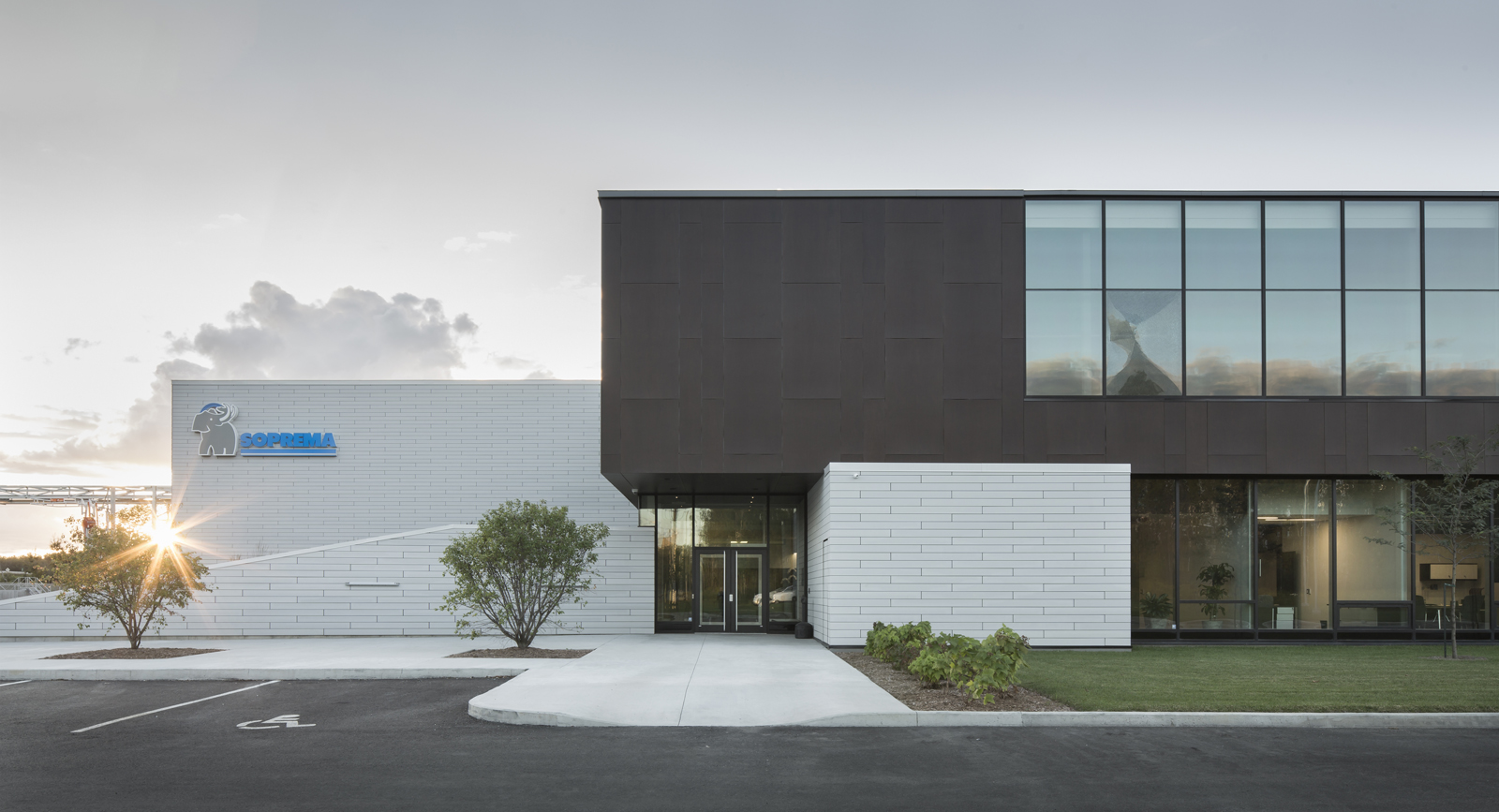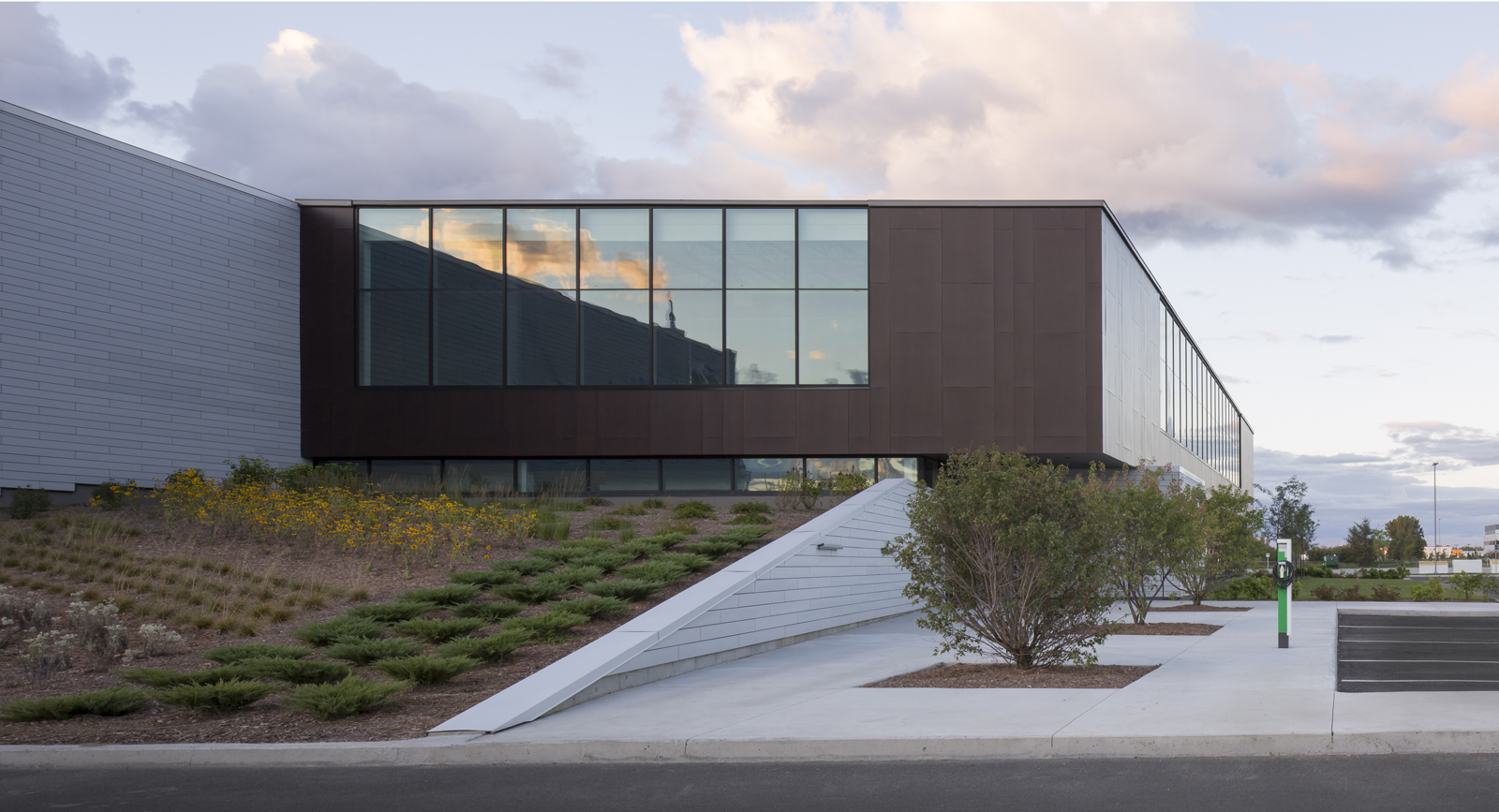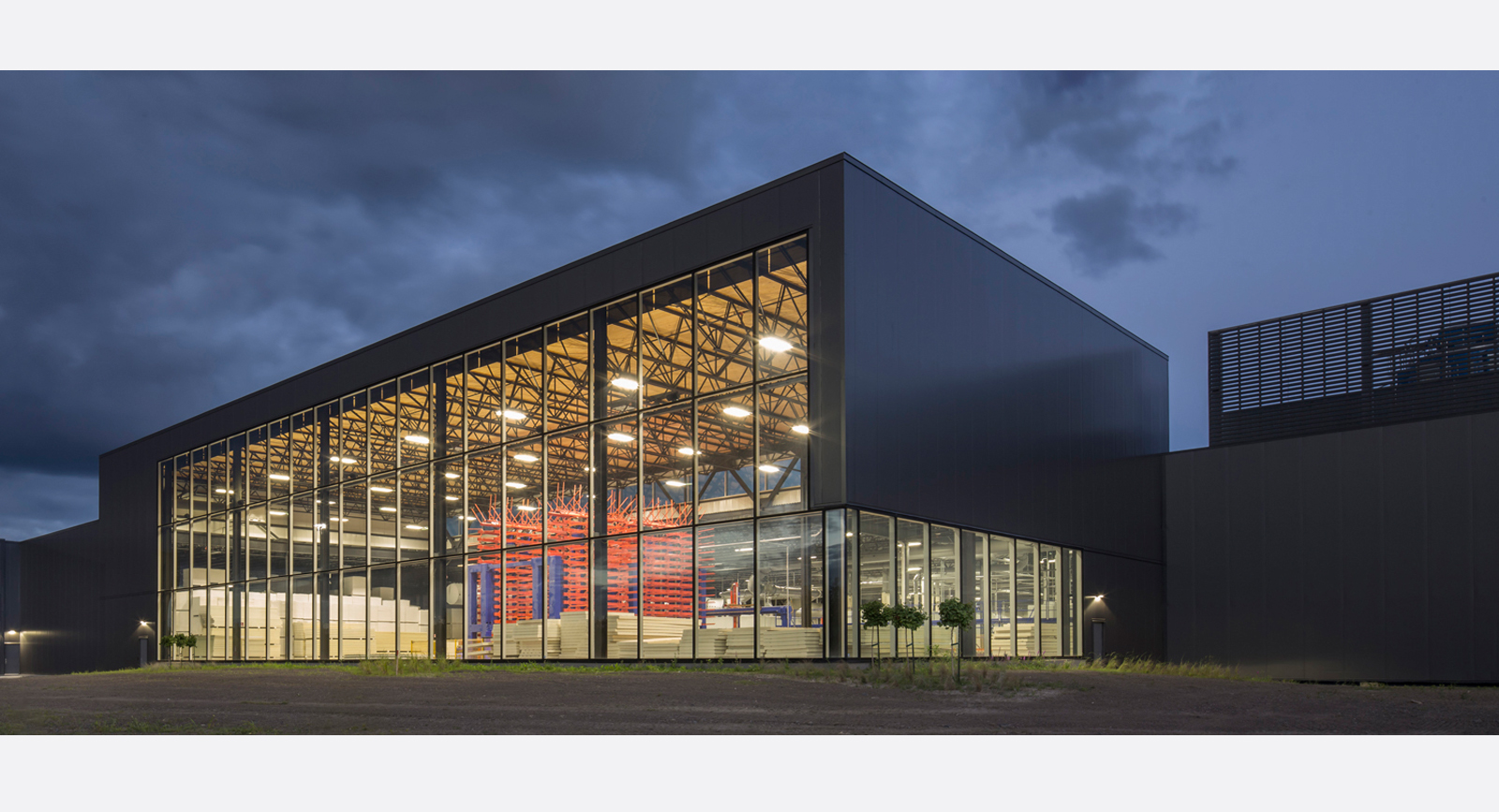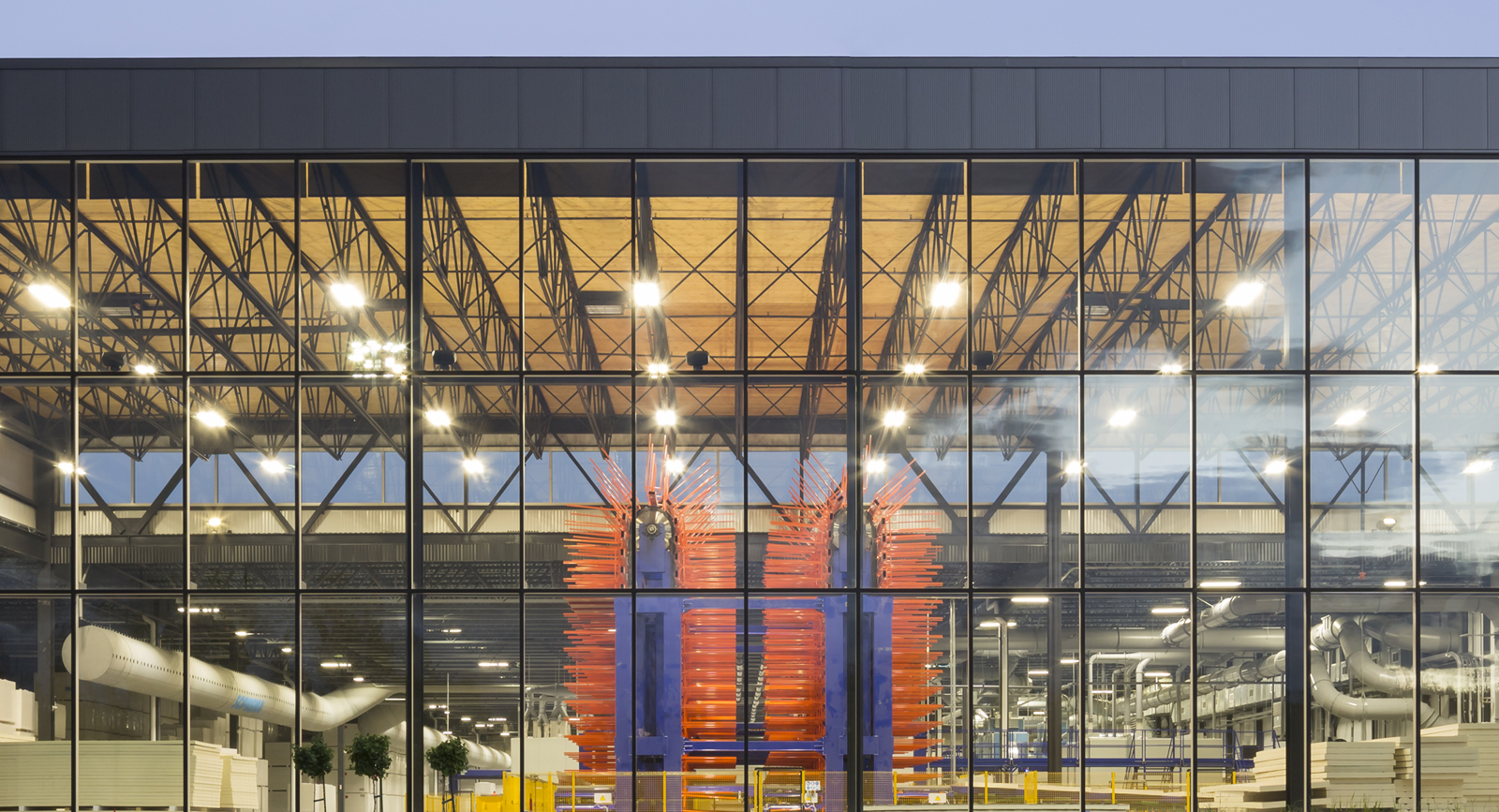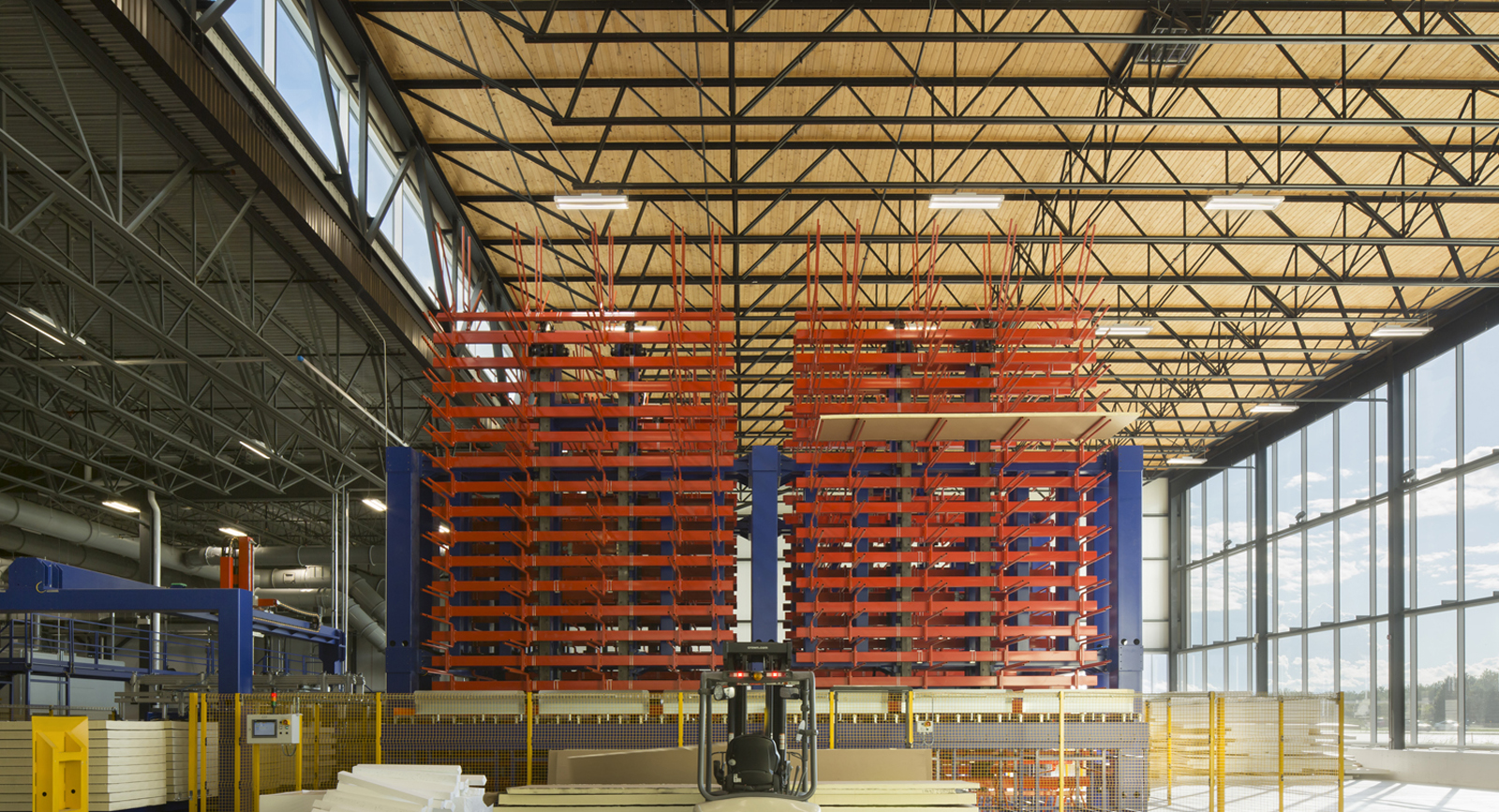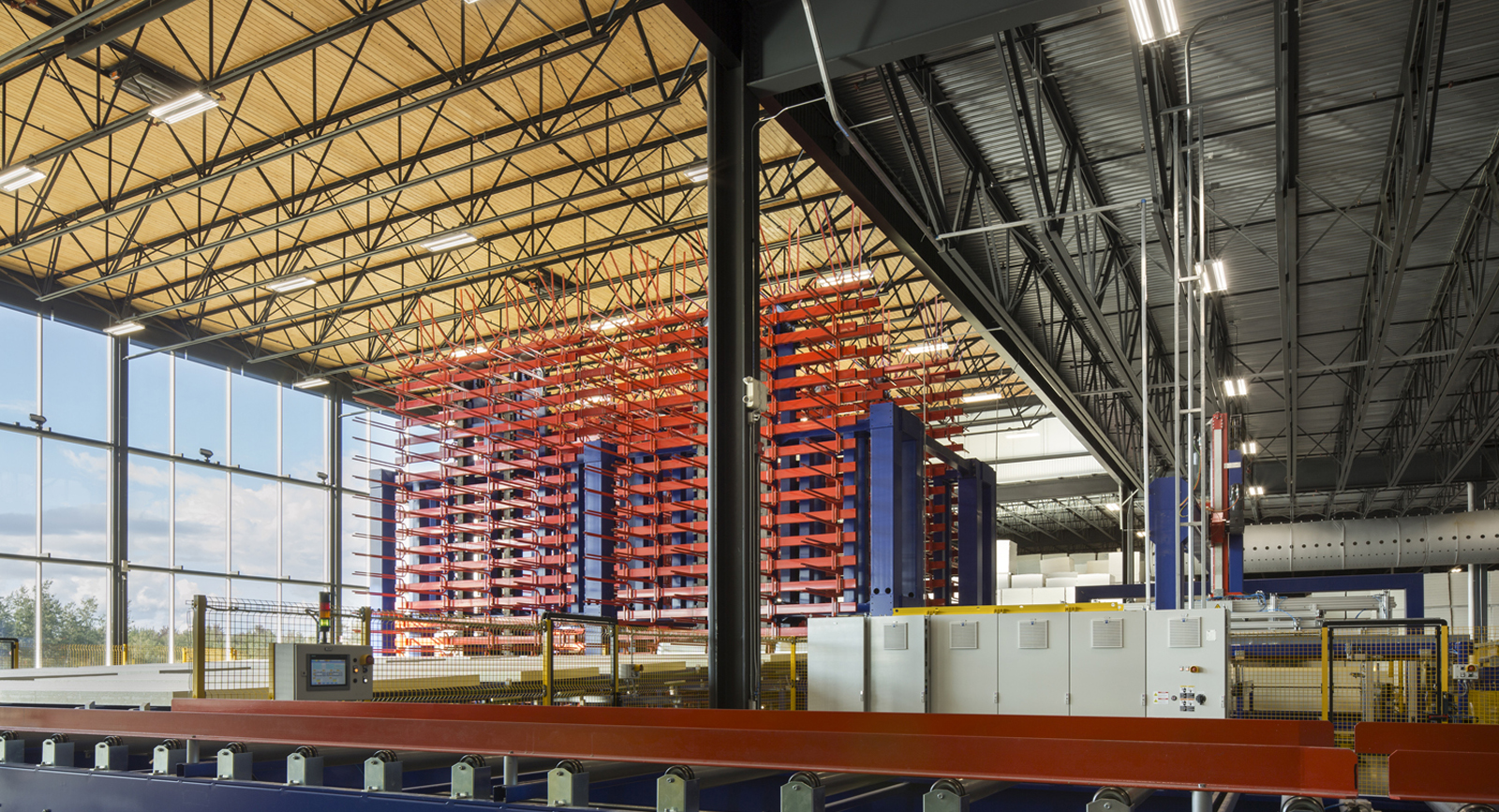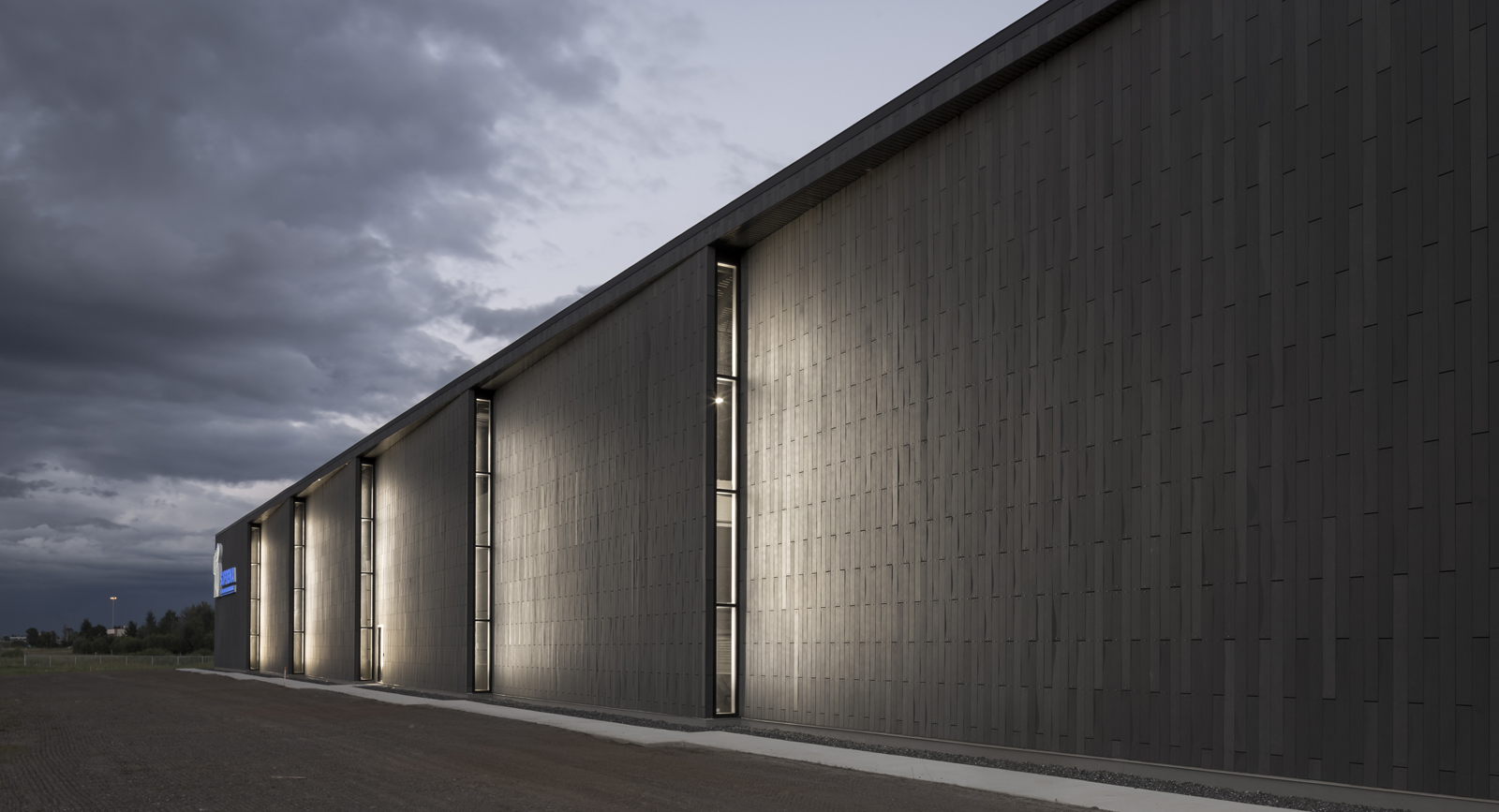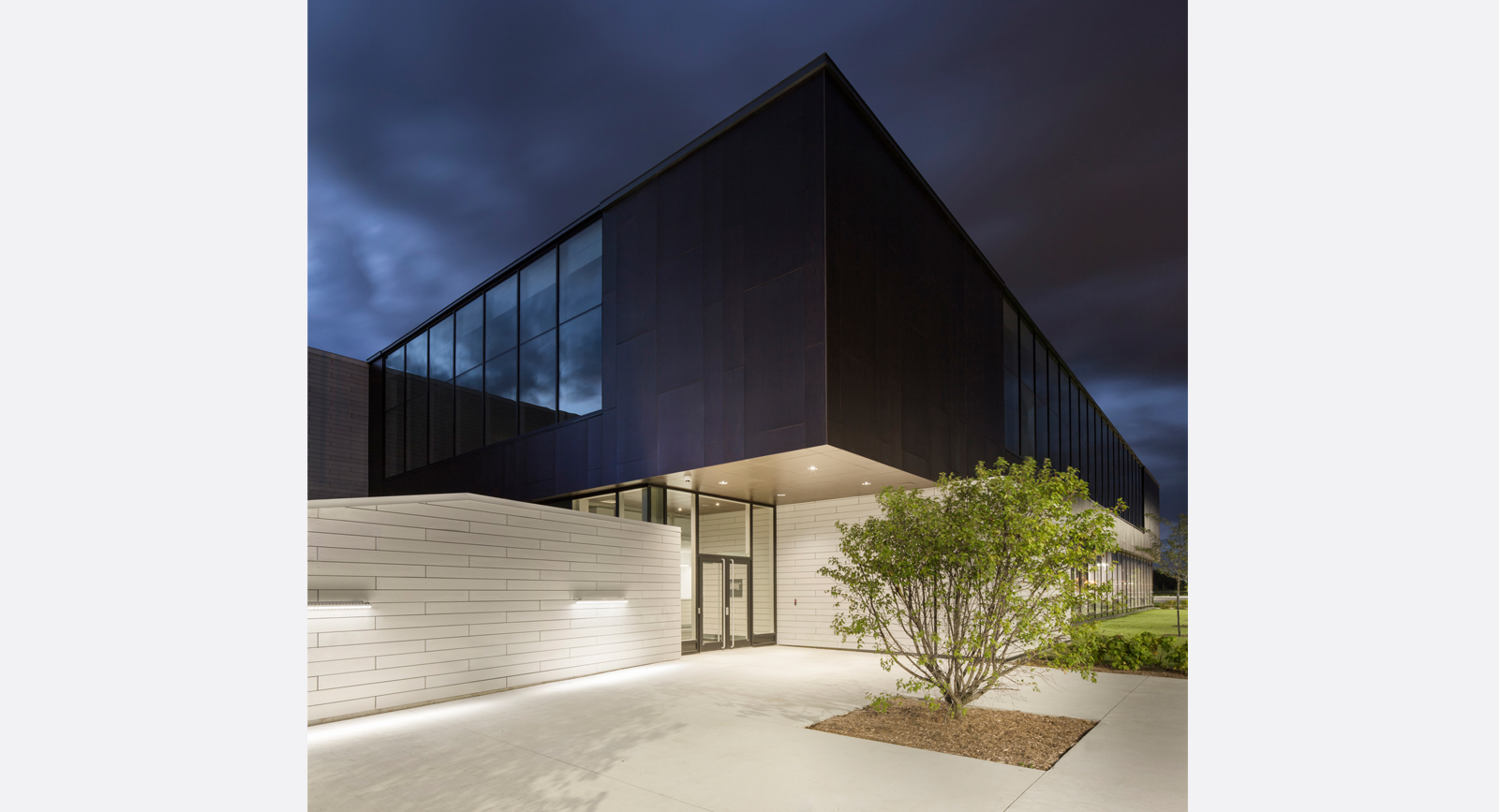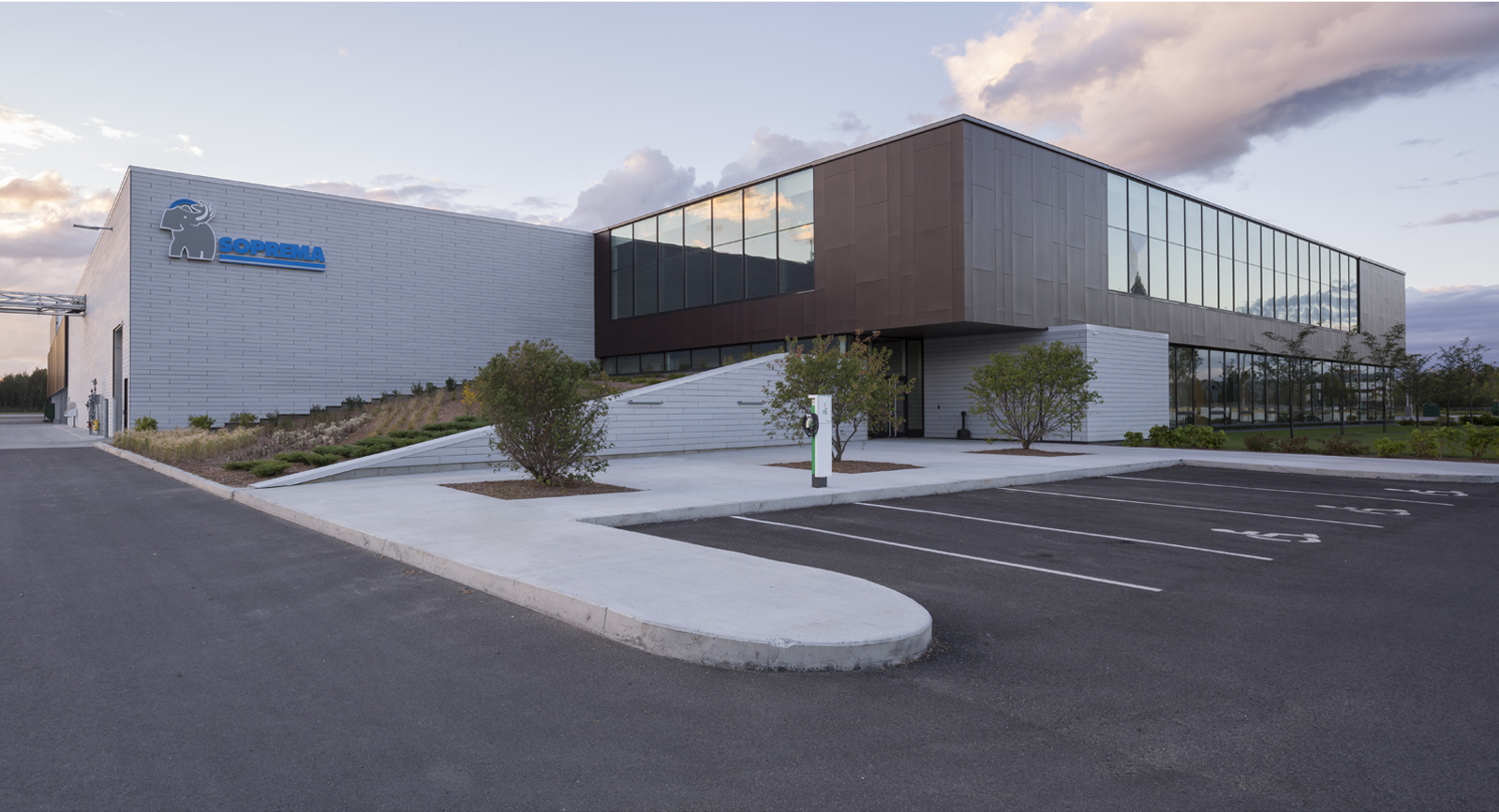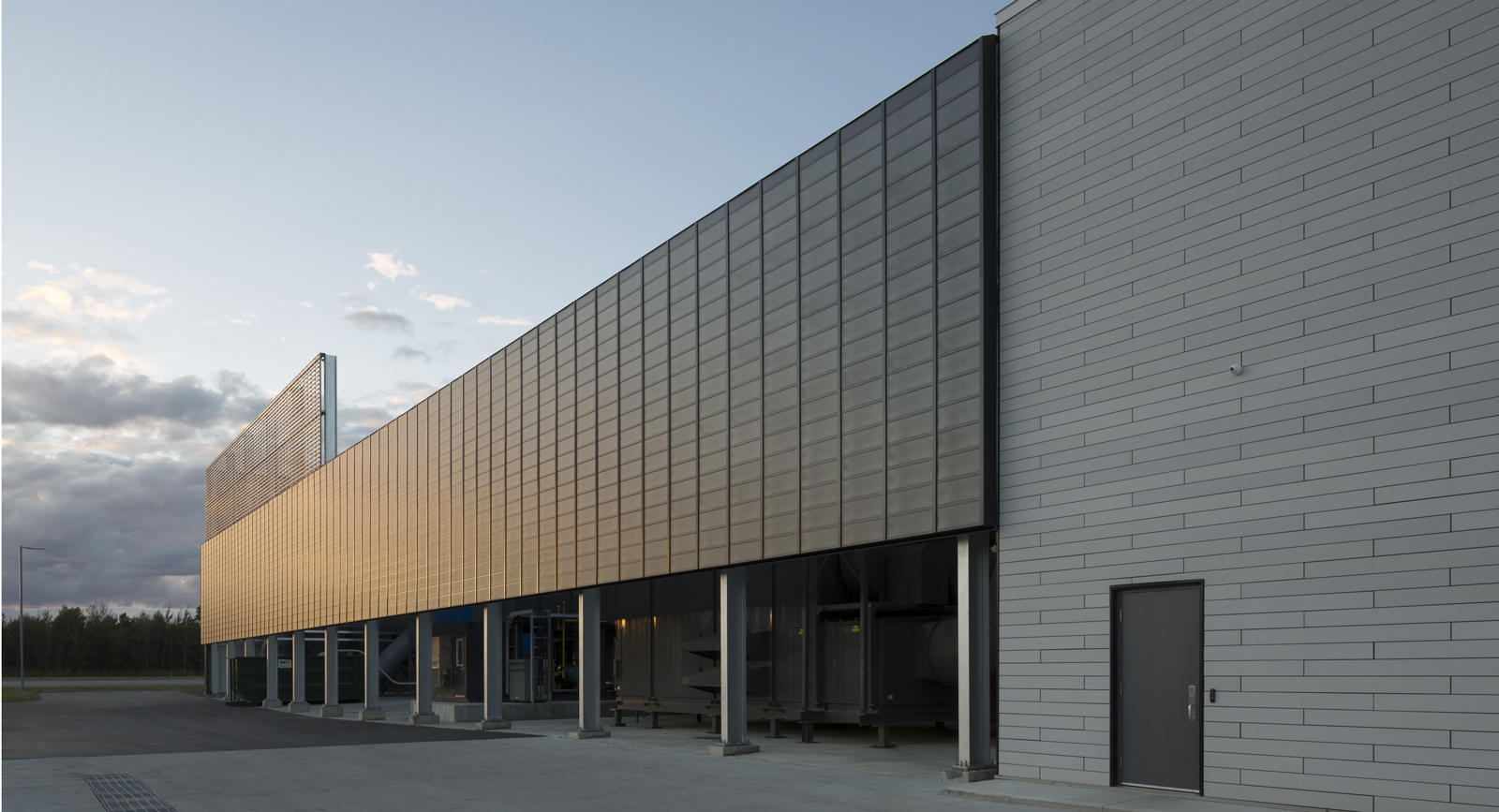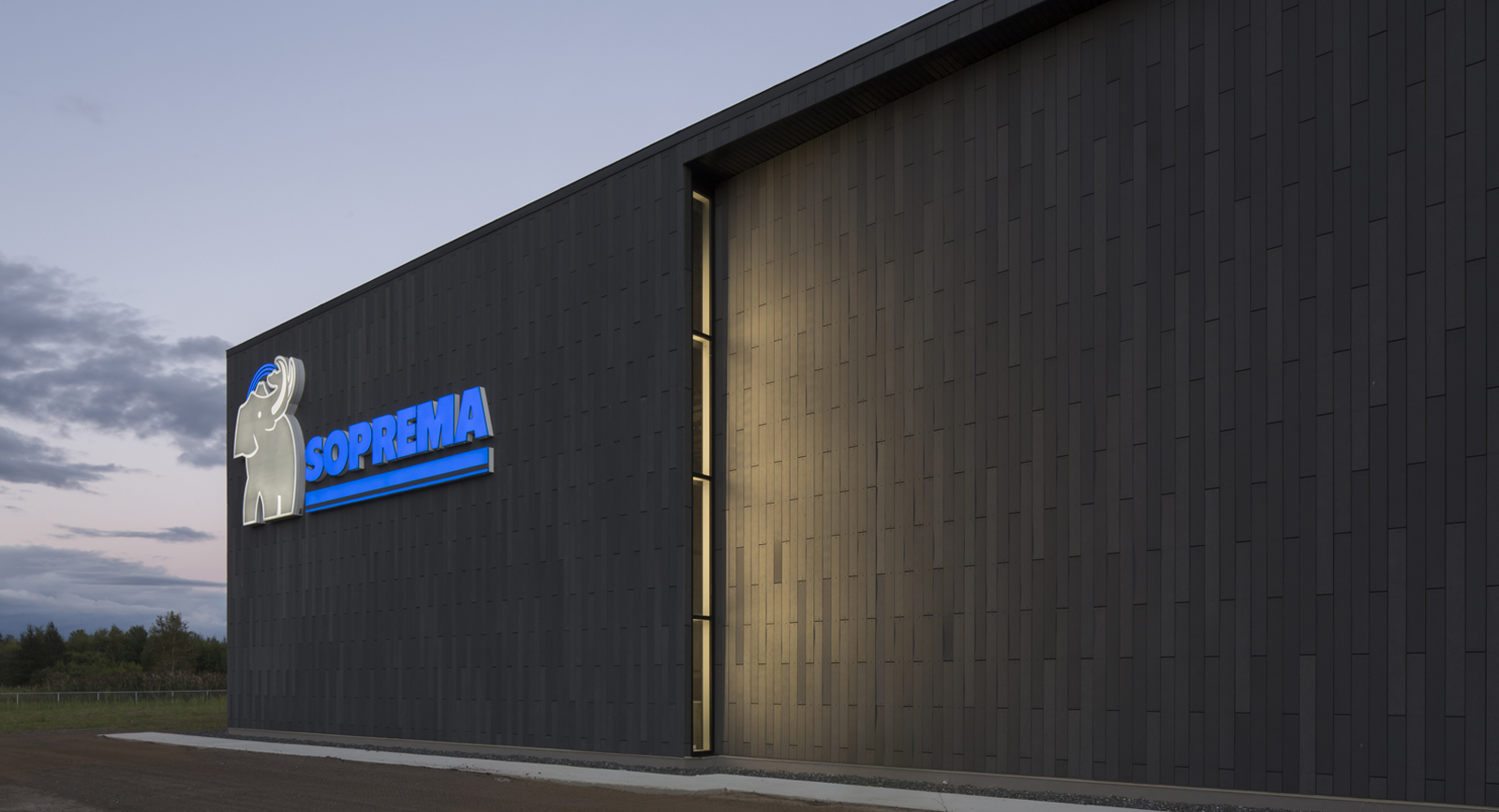Drummondville Soprema Plant
Conax Properties Ltd

Category
Industrial and agricultural
Client
Conax Properties Ltd
Location
Drummondville (Québec) / Canada
Date
2015
Budget
-
Area
22 800 m²
Credits
ABCP + Dominique Blais
Photos © Stéphane Groleau
Awards and mentions
Real Estate Award of Excellence of the Urban Development Institute of Quebec (UDI), Industrial category
Excellence Awards of the Steel Construction (CISC), Green Buildings
Description
The purpose of this construction project is to build a polyisocyanurate insulation panel production facility for Soprema. The design/construction team was selected through a call for qualifications in the form of a competition. The teams of architects, engineers, and general contractors had to present turnkey construction proposals. After an initial selection phase, five teams were asked to submit a proposal including plans, elevation drawings, 3D perspectives, timelines, and materials specifications.
The new plant, which is less than two kilometers from the company’s North American headquarters, occupies a strategic site at the intersection of two major thoroughfares, highways 20 and 55. Because of its highly visible location, the building’s design must convey company values. Apart from its significant architectural expression, the project will apply for LEED Gold certification, a first in the region for this type of building.
The plant will include an industrial manufacturing zone of approximately 7,000 m2, an indoor storage area of about 14,000 m2, and 1,800 m2 of office space on two floors. Apart from the building, the facilities must include loading docks, a parking lot for visitors, employees, and truckers, and a railway line for bringing in raw materials. Most of the existing vegetation has been preserved thanks to the choice of layout, and native species were used to restore the construction zones.
